NFL National Anthem Protests
Late September, 2017 provided media students with a wonderful opportunity to discuss the relationships between and among politics, news, sports and the global village.
Note the update at the end of this lesson that addresses Mr. Kaepernick’s Nike ad.
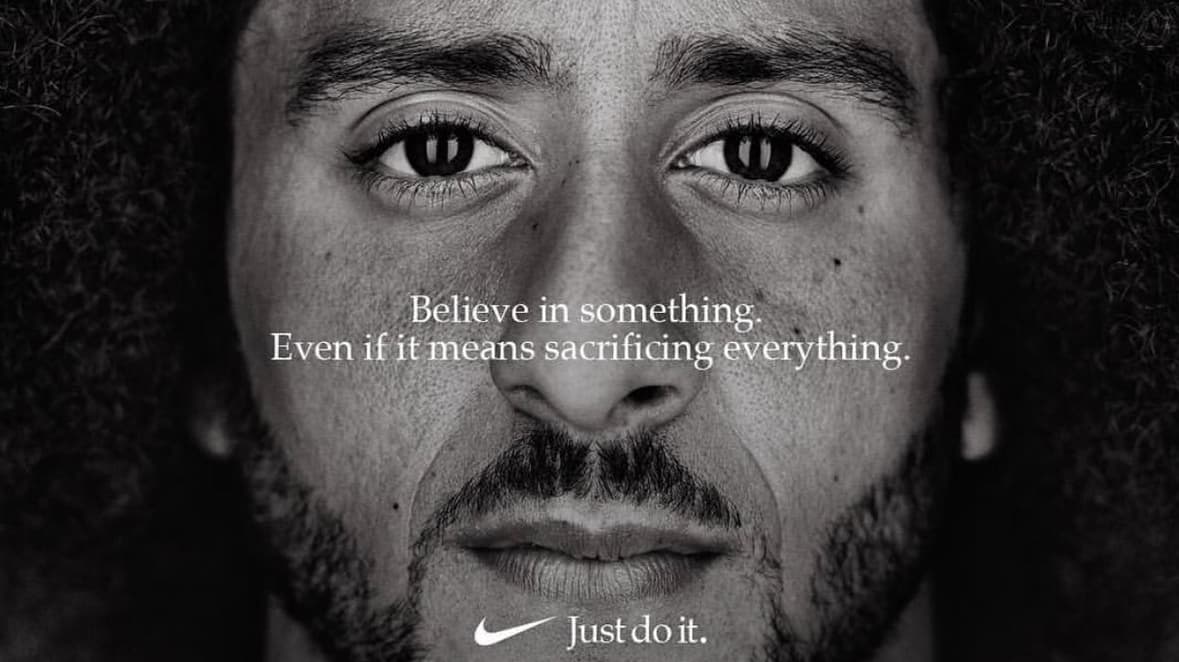

At a campaign rally in Alabama Sept. 22, 2017, POTUS Trump criticized NFL players for disrespecting the flag by kneeling during the National Anthem and NFL owners for losing ratings by enacting rules that reduce player concussions. He suggested that players who earn millions of dollars should not be protesting because America has treated them well.
He repeated his sentiments in tweets on September 23 and 24.
During the pre-game activities of most of September 24’s NFL games, players either refused to take the field until after the anthem or knelt—sometimes with their coaches and owners—while it was sung.

POTUS Trump, pundits and many fans have since responded to the NFL actions.
(See a video backgrounder here.)
These events, and especially the ways that they have been represented, provide a rich site of struggle for inquiry, research, discussion and response. Issues need clarification, facts need verifying, arguments need analysis and ideologies need exploration.
Students might begin by discussing the symbolism of the pre-game anthem and researching Colin Kaepernick, the NFL player who began the kneeling protest in 2016. Questions might include:
What does the pre-game US National Anthem symbolize? How is its singing a political act? What American values does it communicate?
What were Mr. Kaepernick’s reasons for kneeling? How many American black people are shot by police each week? What were the reactions to his kneeling? Was Mr. Kaepernick’s protest successful?
Some people suggest that Mr. Kaepernick is a disloyal American while others say that he is a great American. Why might people make these statements?
Where is Mr. Kaepernick now?
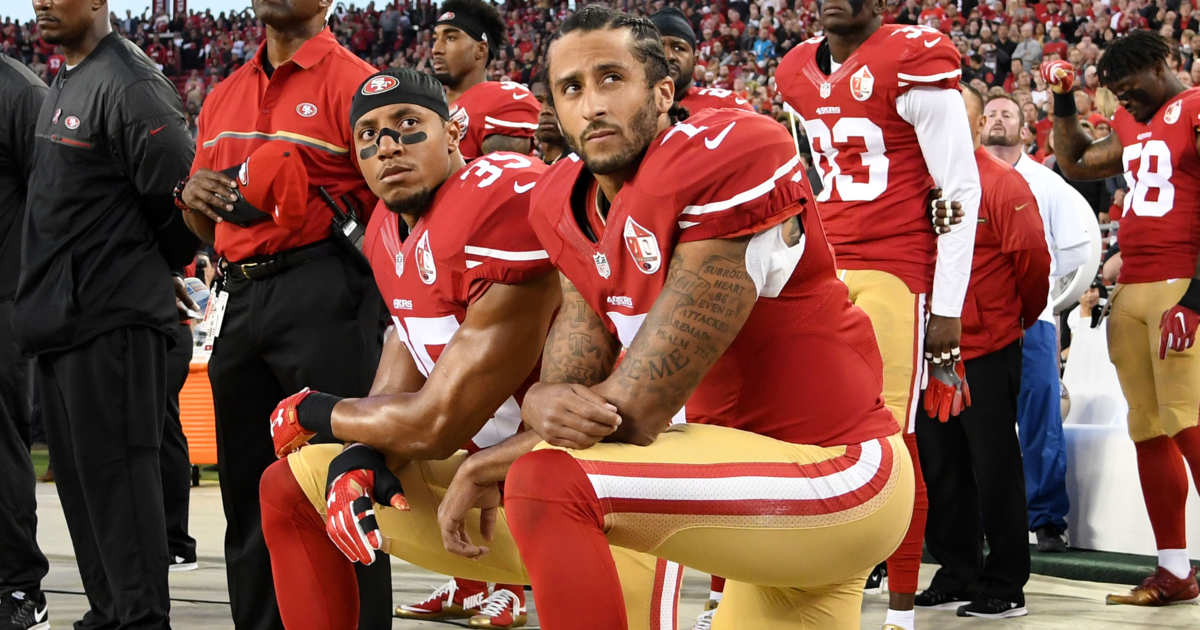
What did Mr. Trump say about NFL players kneeling during the anthem at the Alabama rally? What did he tweet after the rally?
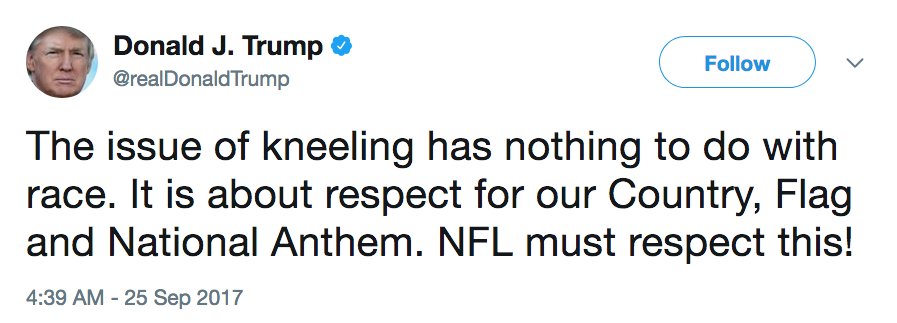
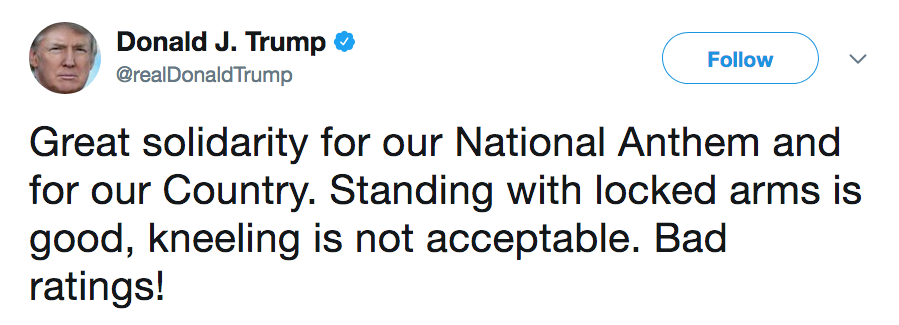
What actions did the NFL players, coaches and owners take in response to Mr. Trump’s campaign rally statements?
(Most players either knelt or locked arms. Some anthem singers raised a fist. How is raising a fist a protest?)
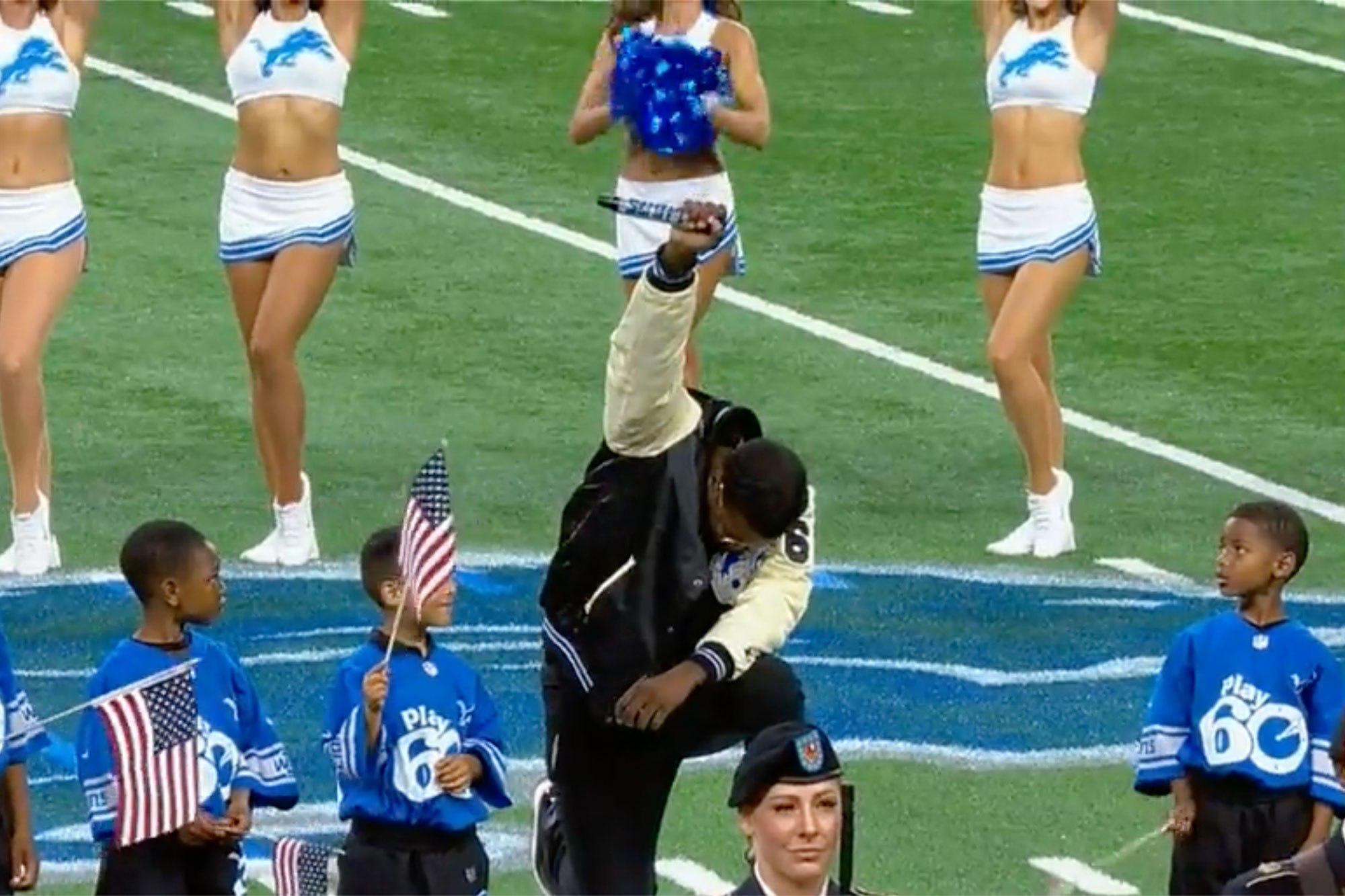
This image is rich in meanings. What are the many possible messages in the frame lines, uniforms, actions and sight lines?
How have Mr. Trump’s statements and tweets been represented on news and sports news sites?
Are these events sports news or more than sports news? Why?
How have the actions of the NFL players, coaches and owners been represented on news and sports news sites?
How have different people—owners, players, fans, sports news reporters, politicians, military veterans—responded to the politicizing of professional football? Why do they think that politics and football are an appropriate—or inappropriate—combination?
One fan remarked that players should have chosen a more appropriate way to protest than during the pre-game anthem. Why was during the anthem an effective use of media? What other, better ways to protest, might there be?
Do an image search for the NFL player anthem protest. You might begin with the 10 images here. How did the photographers use camera distance, camera angle and cropping to make their images more or less effective?
Which images do you think are most effective?
Which are the least effective? Why?
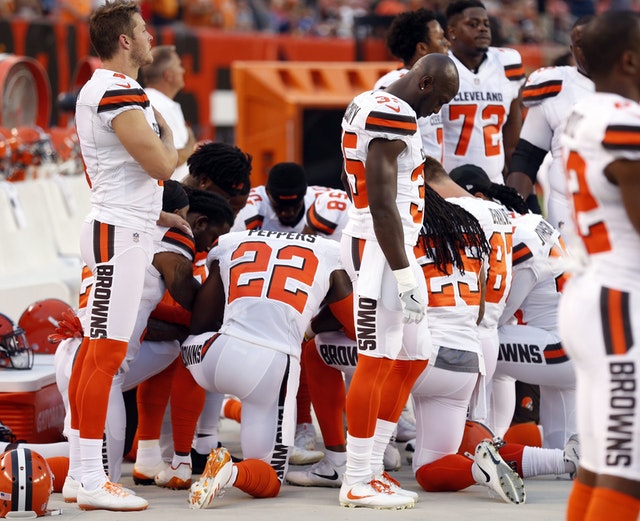
Find anthem-protest news stories on American and non-American news sites.
How have the foreign sites represented the events differently than the American sites?
How have they represented the right to free speech and race issues in America?
How have people used social media to express their opinions of the actors and the actions?
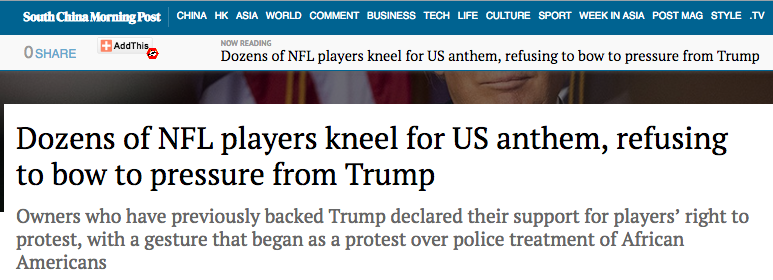
Americans pride themselves on being the protectors of democratic values, including free speech and equality. Research any non-American responses to the protests and reactions.
How might foreign news consumers’ attitudes towards America—and especially free speech and race relations in America—be influenced by these representations?
Summarize the issues and the ways that different media and media organizations have represented them. Explain how the events and their reporting represent and influence events and attitudes both inside and outside the US.
Predict how these media interactions might influence the future of the American presidency, the relationships between sports and politics, the treatment of American blacks by police and/or America’s international reputation.
Your inquiry might be represented as an oral presentation, a video report or a web page.
Now that you have researched and reflected on these issues, what do YOU think?
You might express your opinions in a video, a podcast, a photo-essay, a T-shirt design, a tweet or a blog post.
New developments in the Take-a-Knee events:
Nike released an ad in early September, 2018 featuring a close-up of Mr. Kaepernick’s face. 
Reactions were swift and diverse. Some people applauded Nike’s action while others pledged to burn their Nike gear in protest and/or boycott their merchandise.
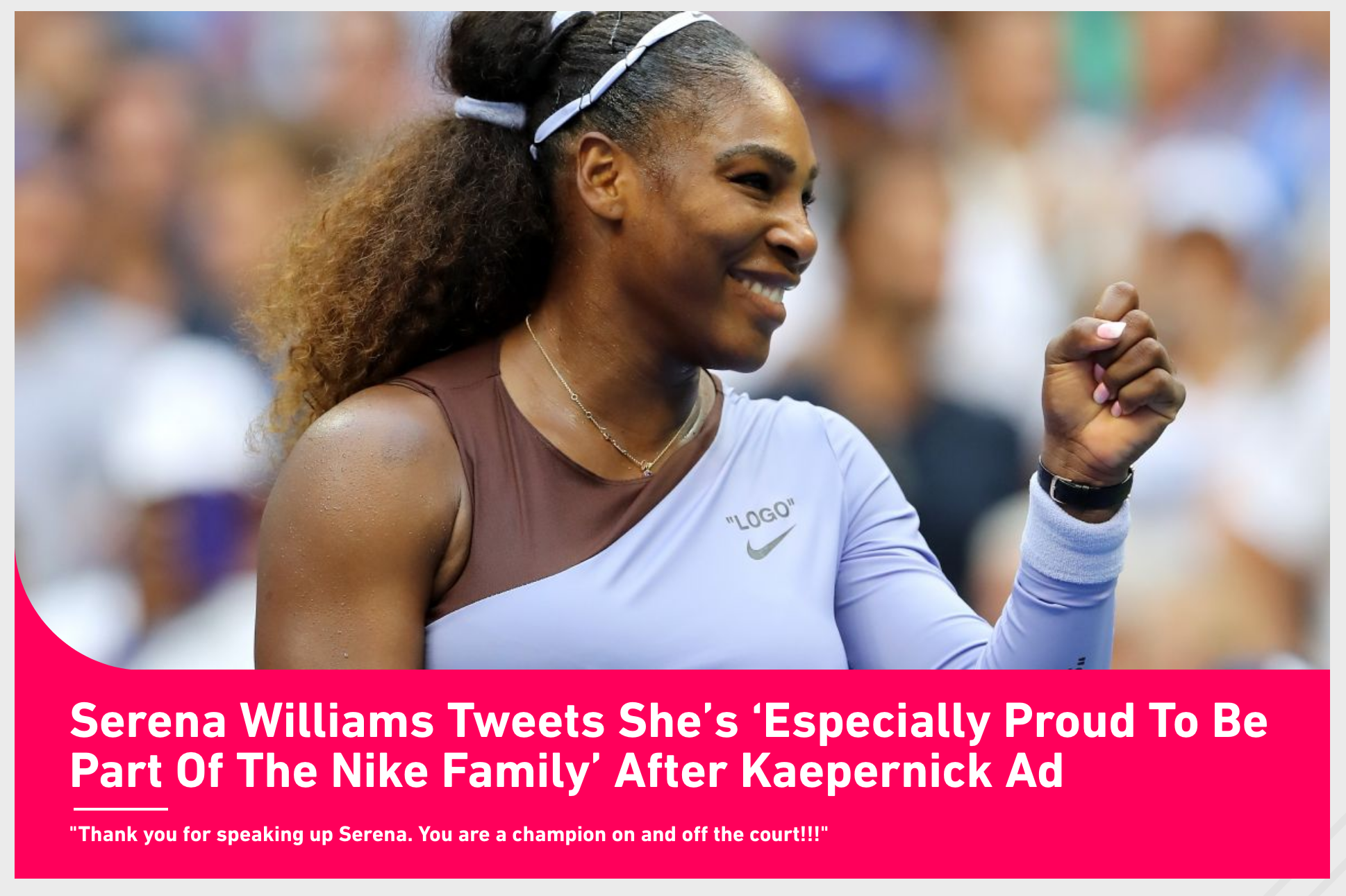
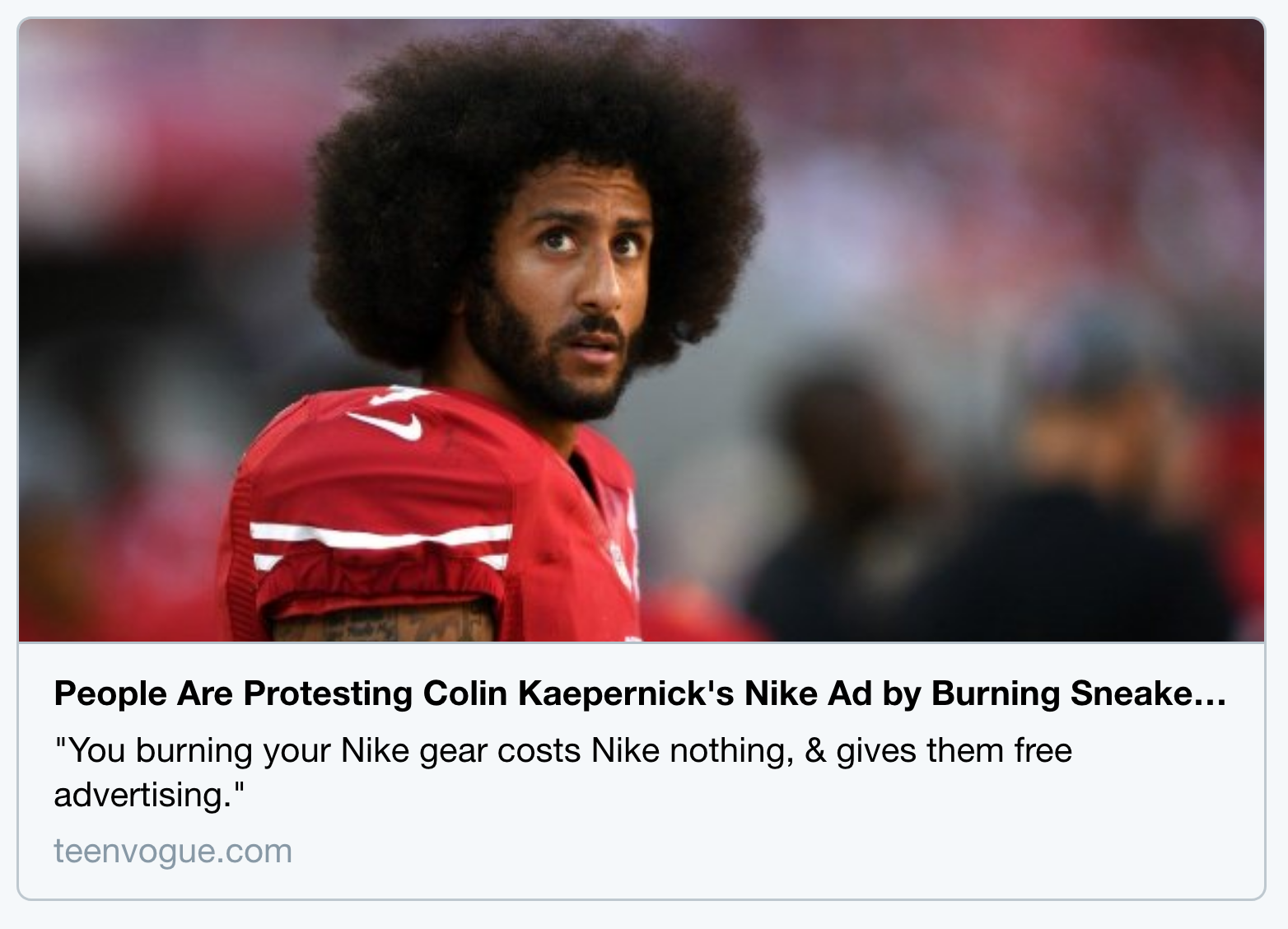
The Take-a-Knee movement is very political, as are the responses. Research Mr. Kaepernick’s intentions and the various responses. How long did the Take-a-Knee movement last? What stopped it? Has it taken a new form?

How might different audiences interpret and respond to this Nike ad?
What is the effect of the ad being presented as a black-and-white photo compared to colour?
What is the effect of the exclusion of Mr. Kaepernick’s name and reference to the Take-a-Knee movement?
What has POTUS tweeted about the ad?
What might Nike gain/lose? Does it have more to gain/lose than money?
How has the ad provided Nike with valuable publicity?
What might Mr. Kaepernick gain/lose?
How does the ad promote an action but not politics?
Or does the ad inevitably support the Take-a-Knee movement?
If this were part of a series of ads, who else might Nike use?
These ideas are applicable to the Elementary and Secondary classrooms. – ed.


